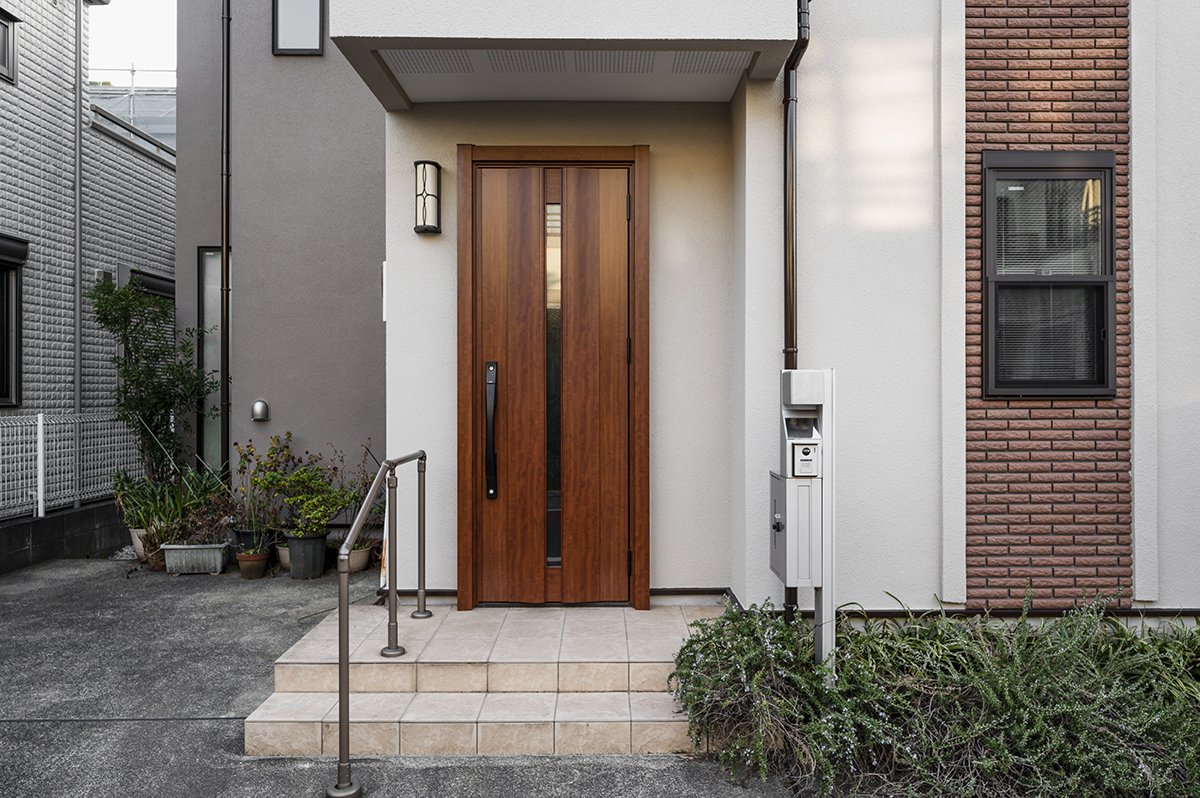
Your front door serves two purposes: it greets visitors and deters undesirables. However, this is the point: not every front door is made equal, and some just can not hold up when you need them to.
Nowadays, as home break-ins occur far too frequently (a break-in every 26 seconds across North America), and as far as choosing the appropriate front door is concerned, curb appeal is no longer the only thing that matters. It is about sleeping comfortably at night, knowing your family is guarded.
So, how do you cut through all the marketing fluff and find a door that actually delivers? Let’s break it down.
The Material Question Everyone Gets Wrong
Walk into any home improvement store and you’ll see three main options: wood, steel, and aluminum. Most people go with wood because it looks traditional, or steel because someone told them it’s “the strongest.”
Here’s what they don’t tell you: Wooden doors look great for about five years, then they start warping and cracking. Steel doors? Sure, they’re tough, but they dent easily and rust like crazy in our Canadian winters. Ever seen a steel door after a few hailstorms? Not pretty.
Aluminum doors with thermal break technology are where it’s at. They don’t warp, they don’t rust, and they actually help keep your energy bills down. Plus, they’ll look the same in 20 years as they do today.
Why Door Thickness Actually Matters
Most people never think to ask how thick their door is. Big mistake. Your standard contractor-grade door is about 1¾ inches thick. A serious security door? We are talking 2 inches or over.
An extra quarter-inch does not seem like much, yet it is the difference between a door that can be breached with a couple of good kicks and a door that can make burglars seek greener pastures. And trust us, they always look for easier targets.
The frame matters just as much. You can have the strongest door in the world, but if it’s sitting in a flimsy frame, you’re just fooling yourself. The frame needs to be just as robust as the door itself.
Hardware That Actually Works
Here’s where most people cut corners, and it comes back to haunt them. You need a Grade 1 deadbolt—not Grade 2, not Grade 3. Grade 1. It must possess a one-inch minimum throw bolt which penetrates deep into the frame.
Smart locks are awesome, but do not allow yourself to get so carried away with the technology that you lose the fundamentals. A kickable smart lock is simply a very costly doorbell. Make sure whatever system you choose still has solid mechanical security backing it up.
And those hinges? If your door swings out, make sure the hinge pins can’t be popped out from the outside. Security hinges with non-removable pins are worth the extra cost.
The Glass Dilemma
Look, everyone loves natural light in their entryway. But regular glass in a front door is basically an invitation for trouble. If you’re going to have glass, make it laminated or tempered glass that doesn’t shatter into convenient burglar-sized pieces.
Here’s a pro tip: don’t put glass anywhere near your lock. Sounds obvious, but you’d be amazed how many doors have decorative glass panels right next to the deadbolt. That’s like leaving a key under the mat, except worse.
If you need glass for light but want privacy, go with frosted or textured options. You get the light without giving potential intruders a clear view of what’s inside.
Weather Protection Nobody Talks About
Your door isn’t just fighting off burglars—it’s battling Mother Nature every single day. Canadian weather is no joke, and a door that can’t handle temperature swings, moisture, and UV rays won’t be protecting you for long.
Good weatherstripping isn’t negotiable. Neither is proper thermal protection. A door that lets cold air in all winter isn’t just uncomfortable—it’s expensive. Multi-point locking systems help here too, creating a tight seal while making break-ins nearly impossible.
Installation: Where Good Doors Go Bad
You can buy the most secure door on the market and end up completely wasting your money if it’s installed incorrectly. Seriously, poor installation ruins more security doors than anything else.
The installer needs to know what they’re doing with security hardware, frame reinforcement, and proper alignment. This isn’t a job for your handyman cousin—find someone who specializes in security doors and has the track record to prove it.
Why We Do This Differently
After dealing with Canadian weather and security concerns for over 20 years, we’ve learned a thing or two about what actually works. At Window Star, we don’t just sell doors—we solve problems.
Our aluminum doors with thermal break technology handle everything from Toronto’s humidity to Calgary’s chinooks without missing a beat. The 6066-T66 aluminum construction and reinforced polyamide strips mean you’re getting German engineering quality that’ll outlast whatever you throw at it.
We have served over 200,000 customers in over 500 locations and provided them with doors that were appropriate to their specific situations. Here is the thing: there is no such thing as a universal formula. Your door should suit your climate, your protection demands and your lifestyle.
You would not want to have a door that appears attractive in the showroom but fails when you need it most. Choose one that is durable and will really do what it is supposed to do.

